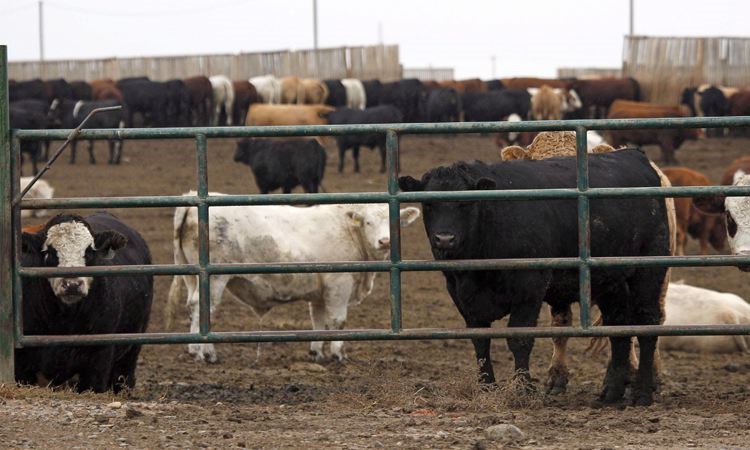The provincial government has committed up to $450,000 towards development of a beef packing plant to Prince George.
B.C. Agriculture Minister Lana Popham announced the funding Friday during the B.C. Cattlemen's Association annual general meeting in Smithers. The goal is to have the plant up and running by 2020.
"This project has the potential to ensure B.C. cattle are bred, raised and finished in our province, providing retailers, suppliers, restaurants and consumers with great quality B.C. beef," Popham said . "This can provide an economic boost to rural B.C. and give consumers what they want."
If the plant becomes fully operational, it would generate about 80 full-time jobs and 620 spin-off jobs.
The funding will be used to develop an industry-led co-operative business model, to support B.C. ranchers, and determine what role they could have in the plant's ownership and operation.
"We recognize that there will be other considerations before we start building this facility," B.C. Cattlemen's Assciation general manager Kevin Boon said. "We need to look at establishing a finishing process, and increasing feeding capacity. There is a lot of work ahead of us, but this is an exciting first step in realizing that vision."
Prince George Mackenzie MLA Mike Morris welcomed the news saying he is glad the NDP government has carried on with a project initiated when the B.C. Liberals were in power.
"Right from the minute I got elected in 2013, I started working with the B.C. Cattlemen's Association on this," said Morris.
He said the BCCA was provided funding to put together a business case.
"I know that things had been looking promising but it seemed to die off just after the last election. So I think it's good, I think we have the ability here in British Columbia, and by building the plant here in Prince George, to be a significant force in the beef production industry."
When he was in government, Morris said they were looking at a plant capable of processing 50,000 to 200,000 head a year.
"Initially, we're looking at a couple hundred head a day which is still significant," he said. "It doesn't compete with the Cargill plant they have in High River (Alberta) and the one in Brooks (Alberta) where they do thousands a day but it would still be sufficient enough to meet the cattle producers' demands here in British Columbia."
Morris sits on the legislature's select standing committee on agriculture, fish and food which has been holding public consultations on local meat production and inspection in B.C.
Public hearings for northern B.C., including one for Prince George that had been scheduled for Tuesday, have been canceled due to a lack of interest. The committee will now hear submissions via teleconference while the deadline for submissions is June 15.
Morris said he has been looking forward to hearing input on a call to eliminate a regulation that requires small farmers living within two hours of an abbatoir to take their animals to the facility to be slaughtered.
He said the regulation "does seem to be a little bit bureaucratic." If there are legitimate health and safety reasons behind the measure, Morris said he's in support, but if it's meant primarily to secure markets for slaughterhouses, not so much.
"If it's more on the competition side, then let the competition sort out where the abbatoirs are and how many we have and so forth," he said.
Lifting the restriction would promote farm-gate sales, enhance food security and encourage consumers to buy local, advocates say. Fraser-Fort George Regional District directors passed a motion of support for lifting the restriction during their May meeting. McBride municipal director Loranne Martin called the regulation a "severe hardship for many of our local farmers."
In 2016, B.C. beef producers brought nearly 174,000 cattle and calves to market, amounting to almost 81,500 tonnes and generating close to $219 million in farm cash receipts, according to the Ministry of Agriculture. The B.C. cattle industry is primarily cow-calf operations, and located mostly in the Thompson-Okanagan, Cariboo, Nechako and Peace River regions.



